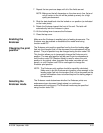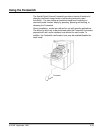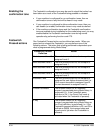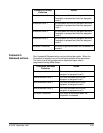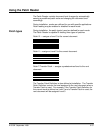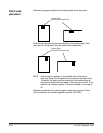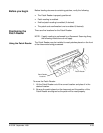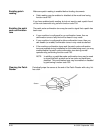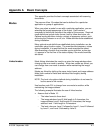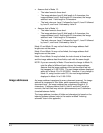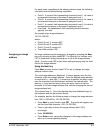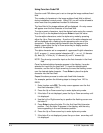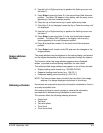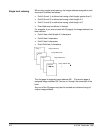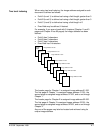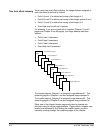
A-61092 September 1999 A-1
Appendix A Basic Concepts
This appendix provides the basic concepts associated with scanning
documents.
Modes
The scanner offers 18 modes that can be defined for a particular
application or group of applications.
When you select a mode for use with a particular application, you are
selecting the format/appearance of the output. Each mode is
comprised of definitions that affect the output of the scanner. Required
mode definitions include index format, level to follow level rules, etc.
Optional mode definitions include a variety of accessory options, such
as turning the Endorser on or off, etc. Mode definitions are established
during installation.
Many optional mode definitions established during installation can be
overridden using function codes. The overrides are temporary, unless
during installation, it is specified that the mode overrides be saved.
After executing a function that overrides a prior definition, a plus sign
(+) appears in the first line of the status display if the mode overrides
are saved.
Linked modes
Mode linking eliminates the need to re-enter the image address when
changing from one mode to another. When two modes are linked, you
can change from one mode to another while maintaining the image
address.
Modes are linked by defining the same index format and image address
fields (both number of fields and individual field lengths) during
installation.
NOTE: The level rule options defined during installation do not need to
be the same to link modes.
Use function code F91 to change from one mode to another, while
maintaining the image address.
The following example illustrates the use of linked modes.
• Assume that in Mode 10:
− The index format is three-level.
− The image address Level 3 field length is 3 characters; the
image address Level 2 field length is 2 characters; the image
address Level 1 field length is 4 characters.
− The level rules are: Level 1 followed by Level 1; Level 2 followed
by Level 1; and Level 3 followed by Level 3.



